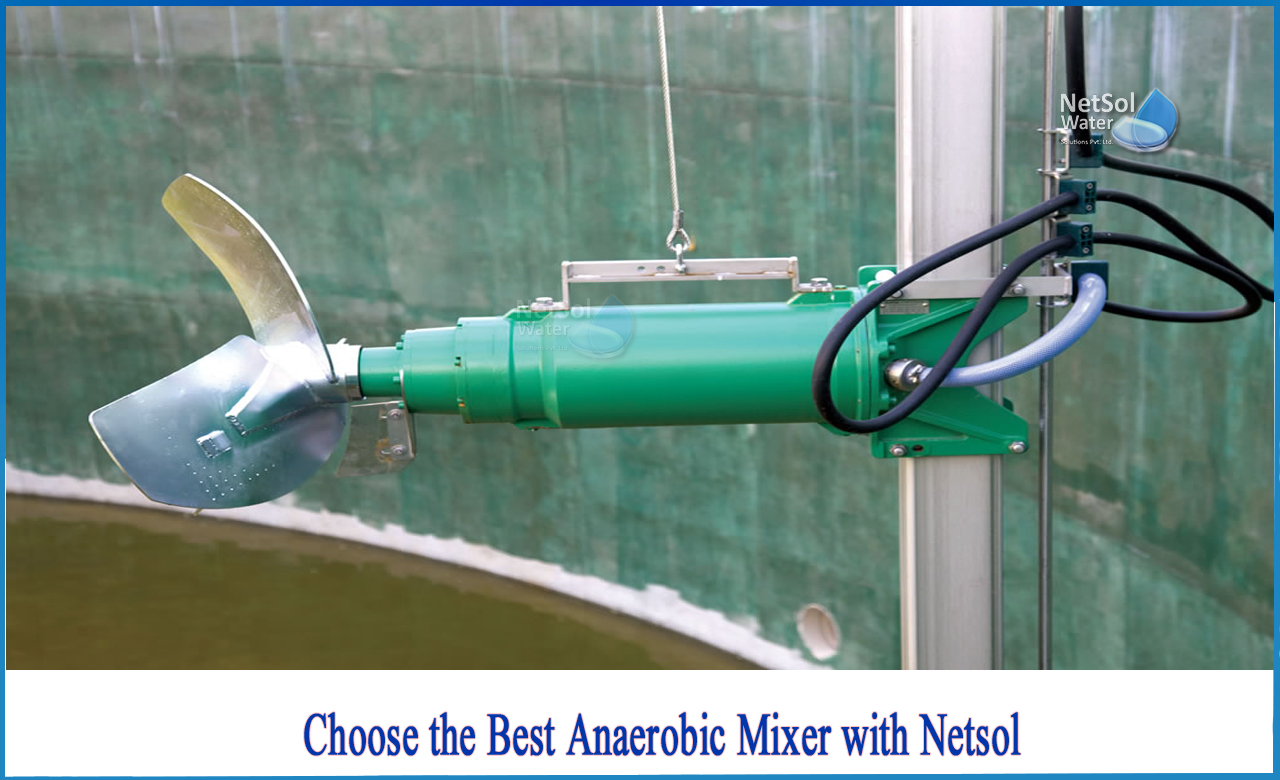How to choose the best anaerobic mixer?
Anaerobic digestion is the breakdown of biodegradable material by microorganisms in the absence of oxygen. The process is used in industry or at home to manage waste or to produce fuel. Anaerobic digestion is being used in much of the industrial fermentation processes and is used to produce food and drink products, as well as in home fermentation.
Anaerobic digestion happens naturally in some soils and lake and oceanic basin sediments, where it is known as "anaerobic activity."
The digestion process starts with the hydrolysis of the input materials by bacteria. Organic polymers that are insoluble, such as carbohydrates, are broken down into soluble derivatives that are then available to other bacteria. The sugars and amino acids are then converted by acidogenic bacteria into hydrogen, ammonia, carbon dioxide, and organic acids. Anaerobic digestion is used in the treatment of biodegradable waste and sewage sludge.
Anaerobic digestion in waste water treatment:
Anaerobic digestion has been instrumental in converting wastewater treatment plants (WWTPs) into water resource recovery facilities (WRRFs). The by-product, formerly known as "waste gas," is converted into biogas, a renewable, clean, and green energy source. Some facilities have generated enough renewable natural gas (RNG) to feed into a pipeline and/or send power back to the grid. Starting the anaerobic digestion process in a tank with some primary and secondary sludge is simple. To thrive, break down solids, and produce biogas, the incoming microbes only require an oxygen-free, homogeneous, warm environment and about 15-20 days. In order for this to happen, the tank must be COVERED, MIXED, and HEATED.
What is the best type of digester cover?
Primary digesters were traditionally mixed, heated, kept at a constant volume, and had a fixed steel cover. Secondary digesters were not mixed or heated, and buoyant or gasholder covers were used to account for liquid level variations caused by bio-solids dewatering and/or hauling. Many secondary digester tanks have been heated and mixed in order to increase biogas yield and solids destruction. Primary or secondary designations cannot be used to effectively advise on equipment selection.
Choose the best digester mixer
Digester mixers are now safer, more effective, and more reliable thanks to advancements in mixing technology. The proper mixer is largely determined by experience and widely accepted digester mixer design rules of thumb. Advanced tools, such as computational fluid dynamics (CFD), struggle to model the complex interactions of solids, grit, liquids, and gas that comprise digester sludge. Historically, this empirical approach was sufficient for low-rate, conventional digesters, but recent interest in spiking digesters with diverse feedstocks (grease, whey, etc.) to produce more biogas necessitates greater sophistication. Thermal hydrolysis processes (THP, also known as sludge pressure-cookers) that change the theology of digester sludge and increase gas production suggest that more consideration should be given to mixing performance and the limitations of various options.
1-Draft tube mixing:
Draft tube mixers are essentially low-head, high-flow, axial-flow pumps that are specifically designed for digesters. They are reversible, so they can pump up or down, and they can be mounted through the digester tank's cover or the side. Flow rates range from 5,000 to 25,000+ gpm, and tank turnover time is typically 20-30 minutes but can be adjusted using variable frequency drives.
2-Linear motion mixing:
Linear motion mixers (LMMs) are a newer mixing technique that has gained popularity as a non-rotational, low-energy alternative. However, insufficient mixing can lead to long-term issues such as process instability, grit settling, scum flotation, and other factors that reduce the digester's long-term effectiveness and active volume. While reducing energy consumption is appealing, it may significantly reduce the mixer's effectiveness.
3-Pump mixing:
Pump and nozzle or jet mixing is a straightforward method that is best suited for highly variable-level digesters (or holding tanks). The floor nozzles effectively spin the contents of the tank but have little ability to submerge floating scum or low-density sludge near the surface.
Conclusion:
Hence, anaerobic digestion acts as part of an integrated waste management system, reduces landfill gas emissions into the atmosphere.
NETSOL WATER is the best manufacturer of water treatment plants in India and provides all type of technologies for the treatment including anaerobic digestion system.
Netsol Water is Greater Noida-based leading water & wastewater treatment plant manufacturer. We are industry's most demanding company based on client review and work quality. We are known as best commercial RO plant manufacturers, industrial RO plant manufacturer, sewage treatment plant manufacturer, Water Softener Plant Manufacturers and effluent treatment plant manufacturers. Apart from this 24x7 customer support is our USP. Call on +91-9650608473, or write us at enquiry@netsolwater.com for any support, inquiry or product-purchase related query.



